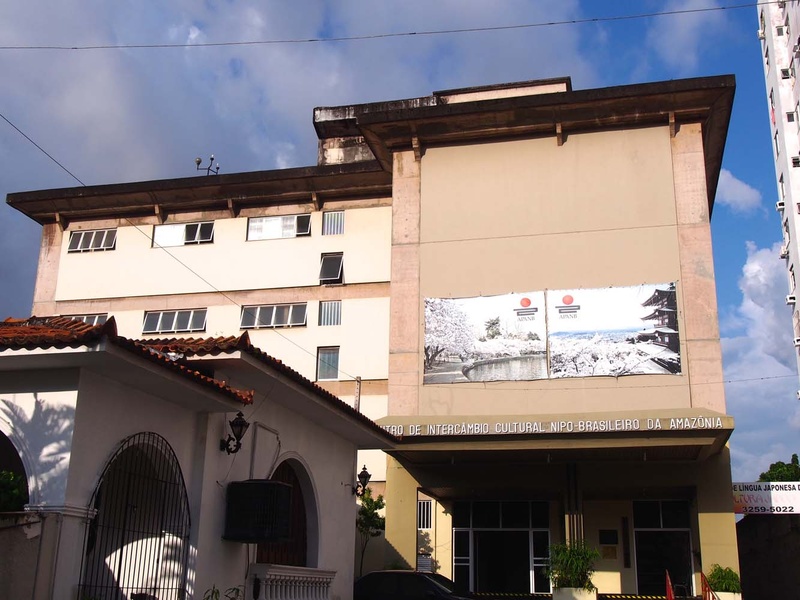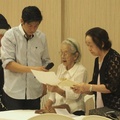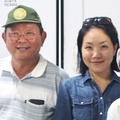Last August, I was assigned to the Northern Brazil Japanese Language Promotion Center in Belem, Pará, Brazil, as a JICA senior volunteer for the Japanese community. The center is located in the same building as the Japan-Brazil Association and the Japanese Chamber of Commerce, and from the first day of my work there, I have met many Japanese and Japanese-Brazilians.
I had heard about it before coming to Brazil, but I never imagined that Japan would remain so prevalent here. It would be better to say that Japan is here, rather than that it "remains." This can also be seen in the high rate of use of Japanese. Working here, there are many days when I don't speak Portuguese. This is because most of the people who come to visit can speak Japanese. And many of them are first-generation Japanese immigrants.
The first Japanese immigrants came to Brazil in 1908. However, Japanese who had immigrated to Peru in the early 1900s had already crossed the Andes and started living in the Amazon region. This is commonly referred to as "Peru descent." Immigrants from Japan began moving to the Amazon in 1929. Of those who arrived that year, only two are still alive. Most of the first generation came after 1953, after the war.
The oldest person I know is 84 years old. She is a very energetic woman who is my karaoke buddy and also practices Japanese dance. My drinking buddy is also an 82-year-old man who recently started his own company. There is also a man in his late 70s who runs a company and is active at the forefront of the Japanese community. In short, everyone is really energetic. With people like this leading the way, it is no wonder that the Japanese community here is so vibrant.
Since there are many first-generation Brazilians, it is natural that Japanese is spoken on a daily basis. In addition, many first-generation Brazilians marry each other, and it goes without saying that the second-generation Brazilians born to these couples have high Japanese language skills. I was also surprised at how many third-generation Brazilians can speak Japanese fluently. These people came to Japan with their parents at a young age during the migrant worker boom that occurred from the late 1980s to the 1990s, grew up there, and then returned to Brazil. It is an interesting situation that reflects the current state of affairs.
The strength of these people is that they can speak both Portuguese and Japanese like native speakers. Many of them use this to teach Japanese. The first generation came here after the war, the second generation were born and raised here, and the third generation moved between the two countries with the changing social climate. Each of these people's backgrounds reflects the "three different types of third generation."
Unlike the south, where the second and third generation are mainly Japanese who took over from the first generation who came before the war, here the first generation are still active. It is also completely different from the Japanese community in Mexico where I used to live. There are many first generation Japanese, and Japanese is deeply rooted in their daily lives. Of course, this "Japan" is the "Japan" in Brazil, and it is different from Japan. It is different in many ways, including food, customs, lifestyle, and language. It is the culture that the Japanese here have built, and it is this culture that has supported their Japanese community.
During the World Cup in Brazil last year, I saw several programs in Japan that featured Japanese Brazilians. The World Cup was a good opportunity for many people to learn about Japanese Brazilians. However, their history was not touched upon, and they were described as people who went to Brazil in search of work but struggled, and people who are Japanese at heart and support the Japanese team, which I found irritating. What was built here is much deeper and bigger. It is as solid and unshakable as the Amazon River.
I have been given a great opportunity to submit a journal to this site. I have about a year and a half left in my term. During this time, I would like to immerse myself in the Japanese community here, experience a "Japan" that cannot be experienced in Japan, and share my impressions from my own perspective. I would be happy if this becomes a new discovery for readers, "Discover Nikkei." I would also be happy if I could use this experience to talk about "Nikkei" from a different angle somewhere else.
© 2015 Asako Sakamoto








